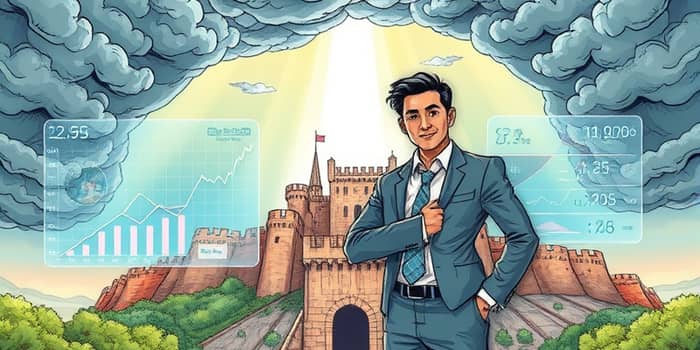
In an increasingly interconnected global economy, organizations must anticipate and prepare for sudden shocks. Scenario analysis offers a structured way to explore potential crises and build resilience before disaster strikes.
Scenario analysis is a disciplined process that estimates how changes in key economic or financial variables affect an organization’s performance. Unlike purely statistical models such as Value at Risk (VaR), scenario analysis explores severe but plausible scenarios that might otherwise lie outside historical data.
At its core, scenario analysis answers the critical question: How much capital do I need to absorb unexpected losses in a stress event? By simulating disruptions ranging from market crashes to geopolitical turmoil, firms can gauge vulnerabilities in revenue, liquidity, and solvency.
Organizations that rely solely on past data risk being blindsided by unforeseen challenges. Scenario analysis complements historical studies by incorporating hypothetical crises tailored to specific business models and risk profiles.
Large financial institutions are already mandated to conduct regular stress tests under regulatory frameworks like the Federal Reserve’s Comprehensive Capital Analysis and Review (CCAR). These evaluations employ severe but plausible scenarios—for example, a global GDP contraction of 6–8% or equity market drops of up to 50%—to ensure adequate buffers and risk mitigation strategies.
Beyond compliance, scenario analysis fosters organizational agility and risk awareness, enabling firms to adjust strategies proactively rather than reacting to losses after they occur.
Economic shocks come in many forms. Understanding their varieties is the first step to crafting comprehensive stress scenarios.
Building an effective scenario analysis framework typically involves five key stages:
Scenario Development: Craft narratives based on historical crises (e.g., the 2008 financial meltdown or the COVID-19 recession), expert forecasts, or reverse stress tests designed to identify breaking points.
Model Calibration: Input scenario shocks into financial, operational, and risk models to simulate outcomes—loss distributions, capital adequacy ratios, liquidity stress indicators, and operational downtimes.
Data Aggregation: Aggregate data across business lines, regions, and product segments. Robust and adaptable data systems enable rapid analysis and help capture the full scope of interconnected exposures.
Analysis and Interpretation: Quantify metrics such as potential loss amounts, required capital buffers, and liquidity shortfalls. Identify risk concentrations and operational vulnerabilities.
Risk Mitigation Strategies: Use insights to adjust risk appetite, recalibrate hedging programs, refine business continuity plans, and update capital and liquidity strategies. Communicate findings to senior management, boards, and regulators.
To maximize the utility of scenario analysis, organizations should adhere to several guiding principles:
1. Employ both broad macroeconomic and firm-specific scenarios to capture external and internal risks. 2. Ensure scenarios remain severe but plausible, avoiding unrealistic extremities that offer little actionable insight. 3. Conduct analyses periodically—often annually or in line with regulatory cycles—and maintain the agility to run ad hoc scenarios in response to emerging threats. 4. Leverage advanced analytics and cloud-based platforms to process large datasets efficiently and update models dynamically.
Regulatory stress tests simulate many harsh conditions: a 40–50% equity market loss, unemployment rates surpassing 10%, and interest rate spikes of 200–300 basis points. In the Federal Reserve’s 2024 Stress Test, major banks demonstrated resilience under simultaneous recessions, real estate price collapses, and high unemployment scenarios.
Firms that passed these tests generally held capital buffers significantly above regulatory minimums, underscoring the importance of capital or liquidity shortfalls before a real crisis. Those findings also informed board-level decisions on dividend policies, share buybacks, and contingency borrowing plans.
By adopting scenario analysis, organizations gain a strategic advantage. They can proactively identify capital or liquidity shortfalls, refine business continuity plans, and strengthen risk culture. This foresight fosters trust with regulators, investors, and stakeholders alike.
Moreover, scenario analysis supports enhanced decision making around risk appetite. When leaders understand potential stress outcomes, they can allocate capital more judiciously, diversify portfolios intelligently, and fortify operational processes.
Ultimately, scenario analysis is not just a regulatory checkbox—it is a powerful tool for building long-term resilience. By continuously challenging assumptions and preparing for the unexpected, organizations transform uncertainty into strategic opportunity.
References













